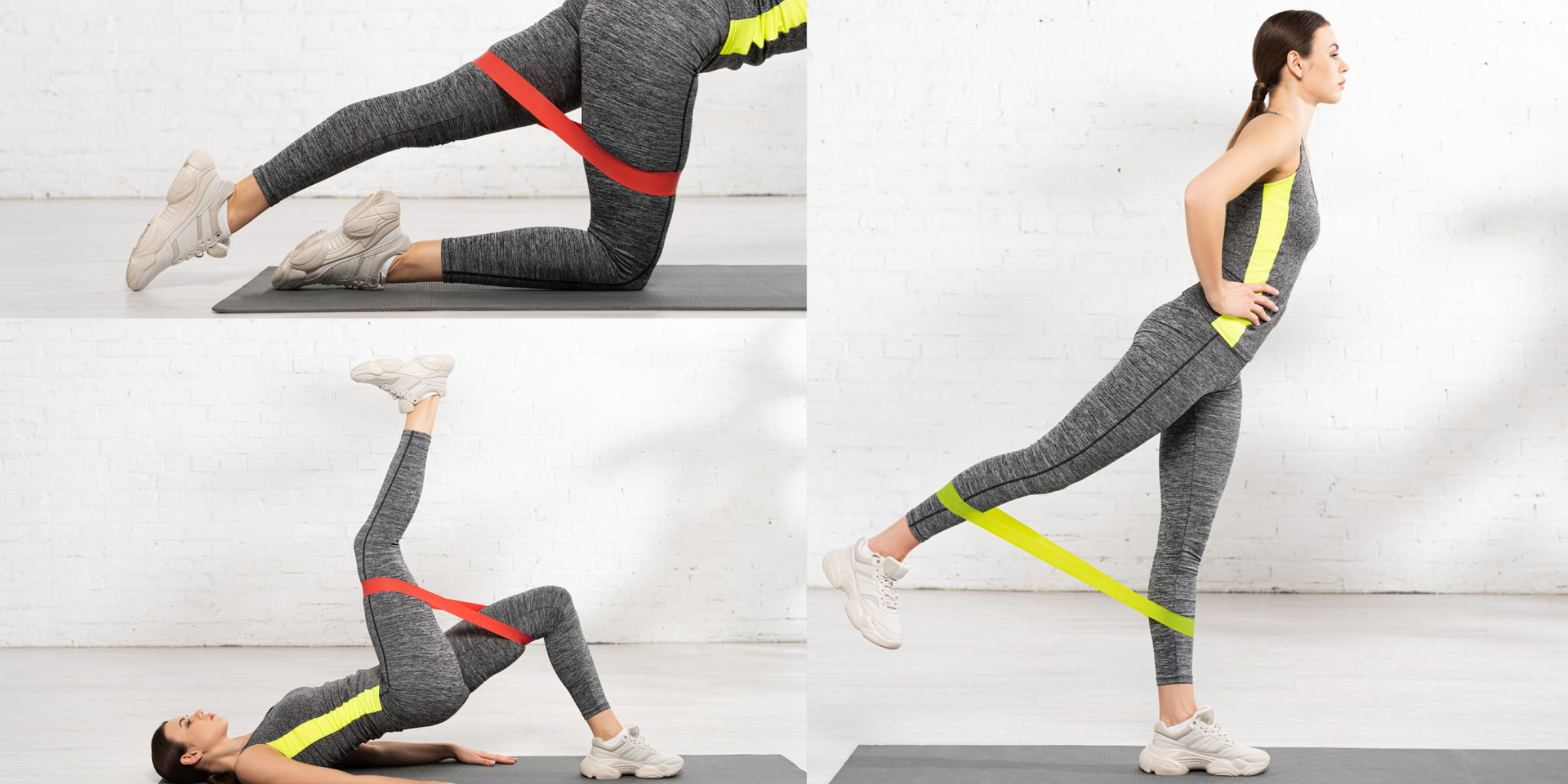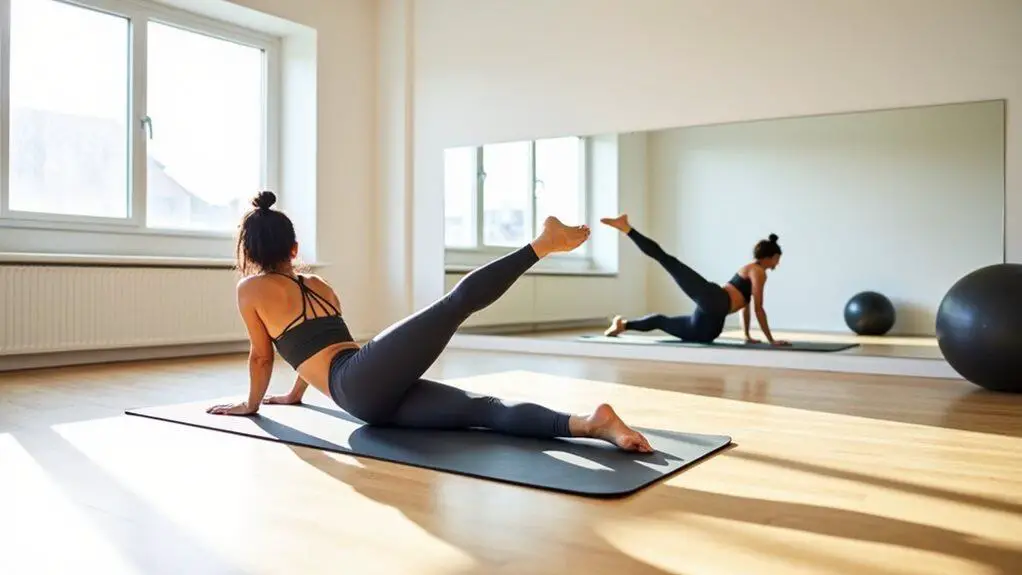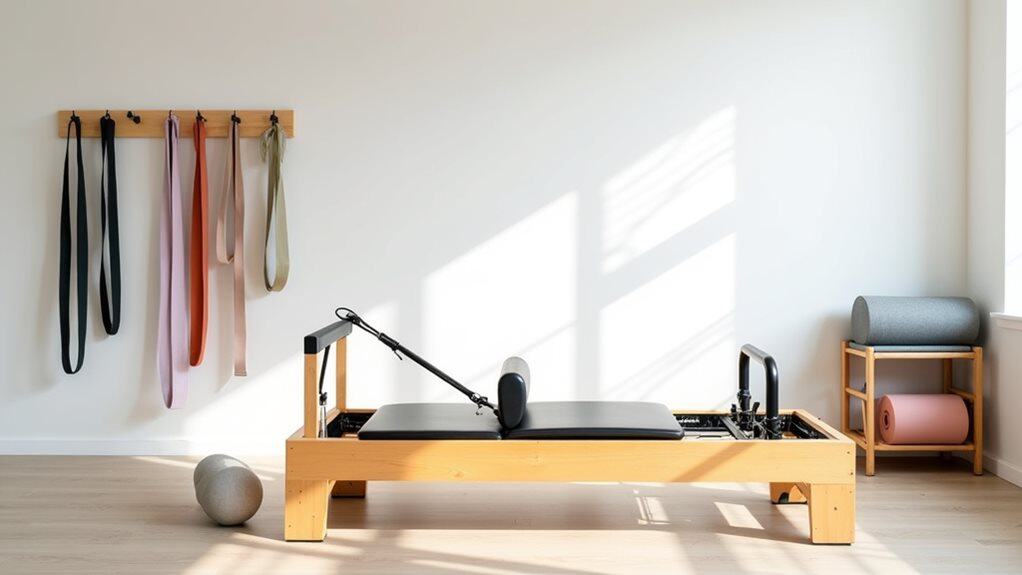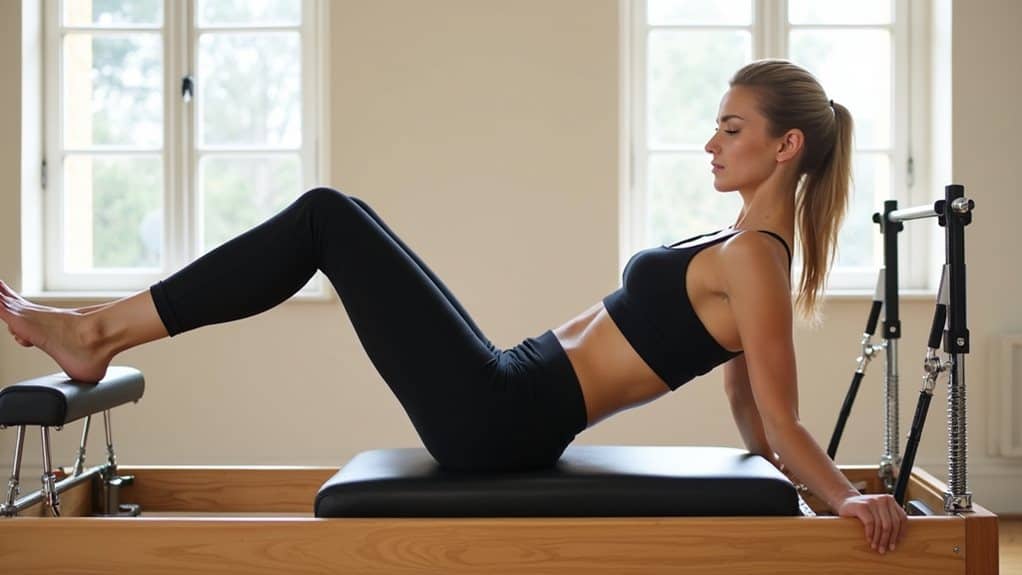Are you looking to tone and strengthen your inner thighs? Resistance bands may just be the tool you need to achieve your fitness goals. These versatile pieces of equipment can provide a challenging workout for your inner thigh muscles, helping you achieve a more sculpted and defined look.
Resistance bands can be a great tool for working inner thighs. Some exercises that can be done with resistance bands to target the inner thighs include side-lying leg lifts, seated leg abductions, and standing leg adductions. It is important to use the proper resistance band and technique to avoid injury.
Using resistance bands in your workout routine offers a variety of benefits, including increased muscle activation, improved balance and stability, and the ability to target specific muscle groups. Plus, resistance bands are portable and easy to use, making them a convenient option for working out at home or on the go.
In this article, we’ll take a closer look at the anatomy of the inner thigh muscles, and explore some of the best exercises you can do with resistance bands to target this area of your body. So grab your resistance bands and get ready to work those inner thighs!
Benefits of Using Resistance Bands in Your Workout
You’ll be amazed at the variety of exercises you can add to your workout routine with the help of resistance bands. Not only are they affordable and convenient, but they also offer a vast range of resistance levels, making them suitable for all fitness levels.
Resistance band versatility allows you to perform a wide range of movements, from upper body exercises to lower body strengthening, all with the added challenge of resistance. Resistance band strength training is an excellent way to build muscle, improve flexibility, and increase endurance.
When you incorporate resistance bands into your workout routine, you’ll engage multiple muscle groups simultaneously, promoting overall strength and balance. Additionally, resistance bands offer a low-impact alternative to traditional weightlifting, making them perfect for those who want to avoid putting excess stress on their joints.
Whether you’re a beginner or a seasoned fitness enthusiast, resistance bands can enhance your workout routine and help you achieve your fitness goals. With their versatility and effectiveness, you can target specific muscle groups, like the inner thigh muscles, and create a challenging workout that will leave you feeling stronger and more accomplished.
So, let’s dive into the anatomy of the inner thigh muscles and explore how resistance bands can help you work them effectively.
Anatomy of the Inner Thigh Muscles
Understanding the muscles that make up the inner thigh is like learning the notes that make up a beautiful melody – each one plays an important role in creating a harmonious and balanced movement.
The inner thigh muscles, also known as the adductors, consist of five muscles that attach from the pelvis to the femur. Their main function is to bring the legs towards the midline of the body, allowing for hip movement and stability during activities such as walking, running, and jumping.
To fully understand the function and movement of the inner thigh muscles, it’s important to know their individual roles. The adductor brevis, longus, and magnus work together to bring the legs towards the midline, while the pectineus and gracilis assist in hip flexion and rotation.
However, these muscles are also susceptible to common injuries such as strains and pulls. To prevent injury, it’s important to incorporate exercises that strengthen and stretch the inner thigh muscles.
Preventative measures such as warming up before exercise and focusing on proper form during movements can greatly reduce the risk of injury. Additionally, incorporating resistance band exercises into your workout routine can help strengthen the inner thigh muscles and improve overall hip stability.
In the next section, we’ll explore various leg abduction exercises that can be performed with resistance bands to target the inner thigh muscles and improve overall lower body strength and function.
Leg Abduction Exercises
Let’s explore how to strengthen and tone the muscles on the inside of our legs with some leg abduction exercises using elastic bands.
Inner thigh stretches are a great way to warm up before starting resistance band leg abduction exercises. These stretches can help improve flexibility and prevent injury. Some effective stretches include the butterfly stretch, the frog stretch, and the seated straddle stretch.
When it comes to resistance bands for leg abduction, the best options are those with a medium to heavy resistance level. These bands provide enough resistance to challenge the muscles of the inner thighs without being too difficult to use. Some popular options include the mini loop bands and the figure-eight bands.
Incorporating leg abduction exercises into your workout routine can help you strengthen and tone the muscles of the inner thighs, leading to improved overall leg strength and stability. As you progress, you can increase the resistance of your bands or try more challenging variations of the exercises.
Next, let’s take a look at leg adduction exercises to further target the muscles on the inside of the legs.
Leg Adduction Exercises
Get ready to target and strengthen the muscles on the inside of your legs with these effective leg adduction exercises. Inner thigh flexibility is important for overall leg strength and stability, and resistance bands are a great tool to use for this type of workout. Before starting, make sure you have the right size resistance band to ensure proper form and maximum effectiveness.
Here are three leg adduction exercises to try:
-
Seated Leg Adduction: Sit on a chair or bench and loop the resistance band around your ankles. Keeping your feet together, slowly pull your legs apart, squeezing your inner thighs as you go. Hold for a few seconds and release back to starting position.
-
Side-Lying Leg Adduction: Lie on your side with your bottom leg bent and your top leg straight. Loop the resistance band around your ankles and lift your top leg a few inches off the ground. Slowly pull your top leg down towards your bottom leg, squeezing your inner thighs as you go. Hold for a few seconds and release back to starting position.
-
Standing Leg Adduction: Stand with your feet hip-width apart and loop the resistance band around your ankles. Slowly lift one leg out to the side, keeping your foot pointed forward. Squeeze your inner thigh muscles as you lift and hold for a few seconds before releasing back to starting position. Repeat on the other side.
Incorporating these exercises into your workout routine can help improve your inner thigh strength and flexibility. As you progress, you can increase the resistance of your band or add more repetitions to challenge yourself further.
Now that you’ve worked on your inner thighs, let’s move on to hip thrust exercises to target your glutes and hamstrings.
Hip Thrust Exercises
If you’re looking to build your glutes and improve your overall lower body strength, hip thrust exercises are a great place to start. The glute bridge is a classic move that targets your glutes and hamstrings while also engaging your core.
Progress to the single-leg glute bridge to increase the intensity and add more balance and stability work. And don’t forget about banded squats, which can help you target your glutes and quads while also improving your hip mobility.
Glute Bridge
The Glute Bridge is a fantastic exercise to tone and strengthen your lower body while also helping to improve your overall posture. To make the most out of this exercise, here are some tips for perfecting your glute bridge:
-
Start by lying flat on your back with your knees bent and your feet flat on the ground.
-
Place a resistance band around your thighs, just above your knees, to engage your inner thighs.
-
Lift your hips up towards the ceiling, squeezing your glutes at the top of the movement.
-
Be sure to keep your core engaged and your back flat on the ground to avoid injury.
Adding a resistance band to your glute bridge will not only help target your glutes but also your inner thighs, making this exercise a great addition to your workout routine.
With proper form and consistent practice, you can improve your overall lower body strength and posture.
Now, let’s move on to the single-leg glute bridge to take your workout to the next level.
Single-Leg Glute Bridge
Now it’s time to take your glute bridge to the next level with the single-leg variation, targeting your glutes even more effectively and improving your overall lower body strength and posture. Single leg variations are a great way to work on imbalances and weaknesses on one side of your body.
Plus, by lifting one leg off the ground, you engage your inner thighs even more, making this exercise an effective way to work on your inner thighs with resistance bands.
To perform the single-leg glute bridge, lay on your back with your knees bent and your feet flat on the ground. Place a resistance band around your thighs, just above your knees. Lift one leg off the ground, keeping your knee bent at a 90-degree angle.
Push through your heel on the ground to lift your hips up towards the ceiling, squeezing your glutes and inner thighs at the top of the movement. Repeat on the other side.
Remember, proper form is key to an effective inner thigh workout, so focus on keeping your hips level and your core engaged throughout the movement.
Incorporating resistance bands for overall lower body strength is a great way to add variety to your workout routine.
Next up, let’s move onto banded squats for a full lower body workout.
Banded Squats
Get ready to pump up your leg muscles with banded squats, a killer exercise that will help you achieve your fitness goals in no time.
Banded squat variations are a great way to work your inner thighs with resistance bands, and they can easily be done at home or at the gym.
To perform banded squats, start by placing a resistance band around both legs, just above the knee. Stand with your feet hip-width apart and toes pointing forward. Slowly lower your body down into a squat position, keeping your chest up and back straight.
As you come back up to standing, squeeze your inner thighs together and engage your glutes. When performing banded squats, it’s important to maintain proper form to avoid injury and get the most out of the exercise.
Keep your knees aligned with your toes and make sure they don’t cave inwards. Additionally, don’t let the resistance band pull your knees together, instead, focus on pressing your knees outwards against the band.
Adding resistance for increased intensity can be achieved by using a thicker resistance band, increasing the number of reps, or holding weights in your hands.
Now that you’ve learned about banded squats, it’s time to incorporate them into a sample inner thigh resistance band workout.
Sample Inner Thigh Resistance Band Workout
Try out this sample workout using bands to target and tone the muscles of your upper legs. The workout consists of three exercises that are effective in working your inner thighs.
First, you’ll do banded side steps. Place the band around your ankles and step to the side while keeping tension in the band.
Next, you’ll do banded leg lifts. Lie on your side and place the band around your ankles. Lift your top leg up and down while keeping tension in the band.
Lastly, you’ll do banded sumo squats. Place the band around your thighs and squat down, keeping your knees out to the sides.
When performing these exercises, it’s important to maintain proper form to ensure that you’re effectively targeting your inner thighs. For the banded side steps and banded sumo squats, make sure to keep your knees out to the sides and don’t let them collapse inwards. For the banded leg lifts, keep your hips stacked and lift your leg straight up without rolling forwards or backwards.
Incorporating resistance bands into your workouts is a great way to target and tone specific muscle groups. To get the most out of your resistance band workouts, try incorporating them into your regular routine and gradually increasing the resistance of the bands over time. Remember to always maintain proper form to ensure that you’re effectively targeting the desired muscle groups.
Tips for Getting the Most Out of Your Resistance Band Workouts
Using resistance bands in your workouts is like adding seasoning to your favorite dish – it enhances and brings out the best in your muscles, making them stronger and more toned with each use.
However, to get the most out of your resistance band workouts, it’s important to choose the right band for your fitness level and exercise selection. A band that’s too light may not challenge your muscles enough, while a band that’s too heavy may lead to poor form and potential injury. Take the time to select the appropriate resistance band for your workout to ensure maximum effectiveness.
Proper form is also crucial when working with resistance bands. Poor form can lead to muscle imbalances, strains, and even joint pain. When using resistance bands, focus on engaging the targeted muscles and maintaining proper alignment throughout the exercise. Keep your movements slow and controlled, and avoid jerky or erratic movements that can put unnecessary stress on your joints.
By practicing proper form, you’ll not only enhance the effectiveness of your resistance band workouts, but you’ll also reduce your risk of injury.
Incorporating resistance bands into your fitness routine can be a game-changer when it comes to building strength and toning your muscles. But to truly experience the benefits of using resistance bands, it’s important to select the right band for your fitness level and exercise selection, and to use proper form throughout your workout.
By following these tips, you can enhance the effectiveness of your resistance band workouts and achieve your fitness goals with greater ease and efficiency. So why not add some spice to your workout routine and grab a resistance band today?
Incorporating Resistance Bands into Your Fitness Routine
Incorporating resistance bands into your fitness routine can be a game-changer for building strength and toning muscles. There are a variety of resistance band selections available, so it’s important to choose a band that matches your fitness level and goals. Proper form is crucial to avoid injury and maximize the effectiveness of your workouts.
When using resistance bands, proper form is key to targeting specific muscle groups. For example, if you want to work your inner thighs, place the band around your ankles and stand with your feet hip-width apart. Slowly step your left foot out to the side, keeping tension on the band, and then return to the starting position. Repeat on the right side for a complete set.
Incorporating resistance bands into your fitness routine can provide a versatile and effective addition to your workouts. With proper form and resistance band selection, you can target specific muscle groups, such as the inner thighs, and achieve your fitness goals. So, grab a resistance band and get ready to take your fitness routine to the next level.
Final Thoughts
Congratulations, you’ve made it to the end of this article on working your inner thighs with resistance bands! Hopefully, you’ve gained some valuable knowledge on the anatomy of the inner thigh muscles and various exercises you can do with resistance bands to strengthen and tone them.
Incorporating resistance bands into your fitness routine is a great way to add variety and challenge to your workouts. They’re affordable and portable, and they provide a low-impact workout that’s gentle on your joints. So why not give it a try?
By using resistance bands for leg abduction, leg adduction, and hip thrust exercises, you can target your inner thigh muscles and see noticeable results in no time. Remember to always listen to your body, use proper form, and gradually increase the intensity of your workouts for best results.
With consistency and dedication, you’ll be on your way to achieving your fitness goals in no time!




